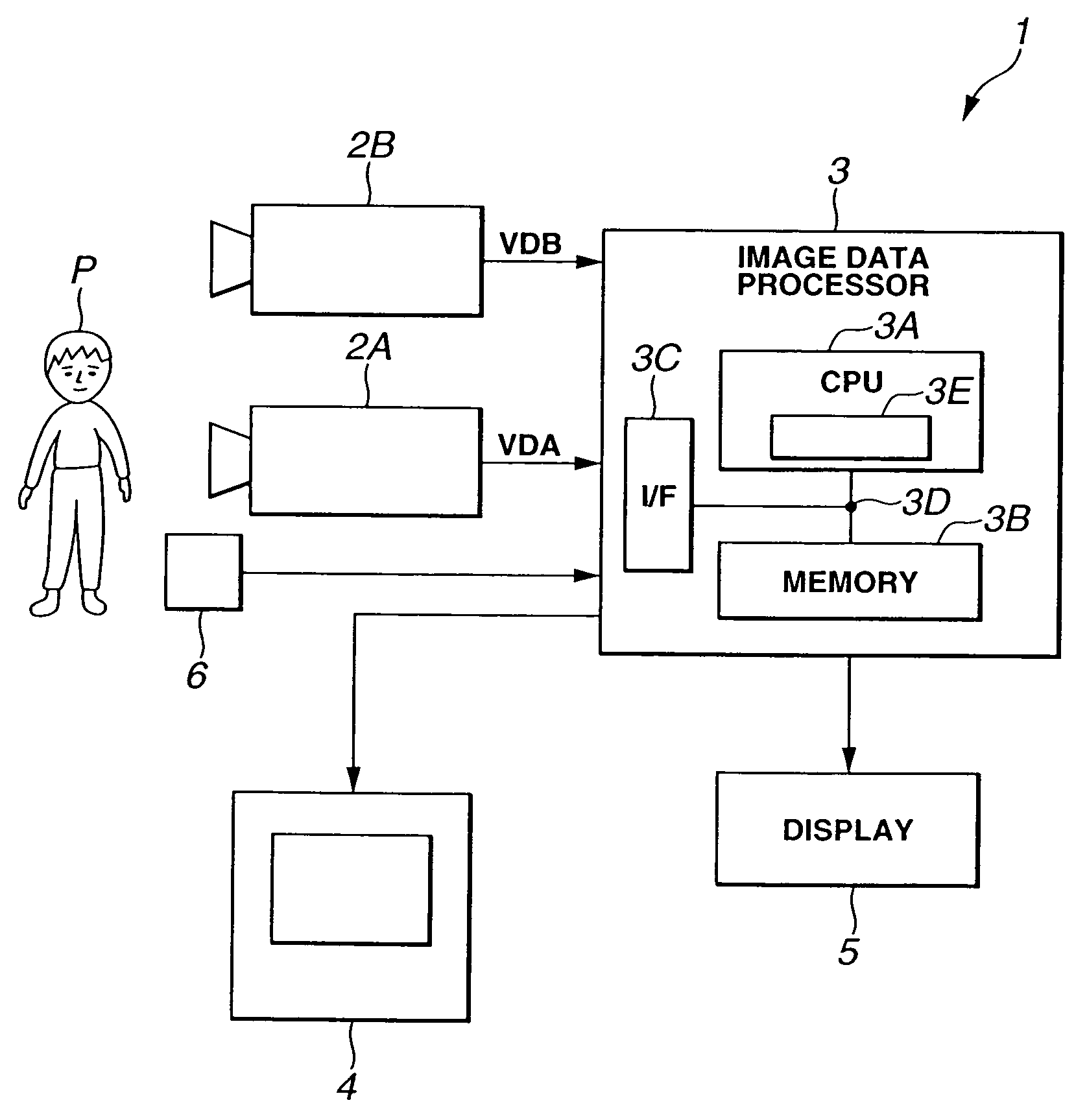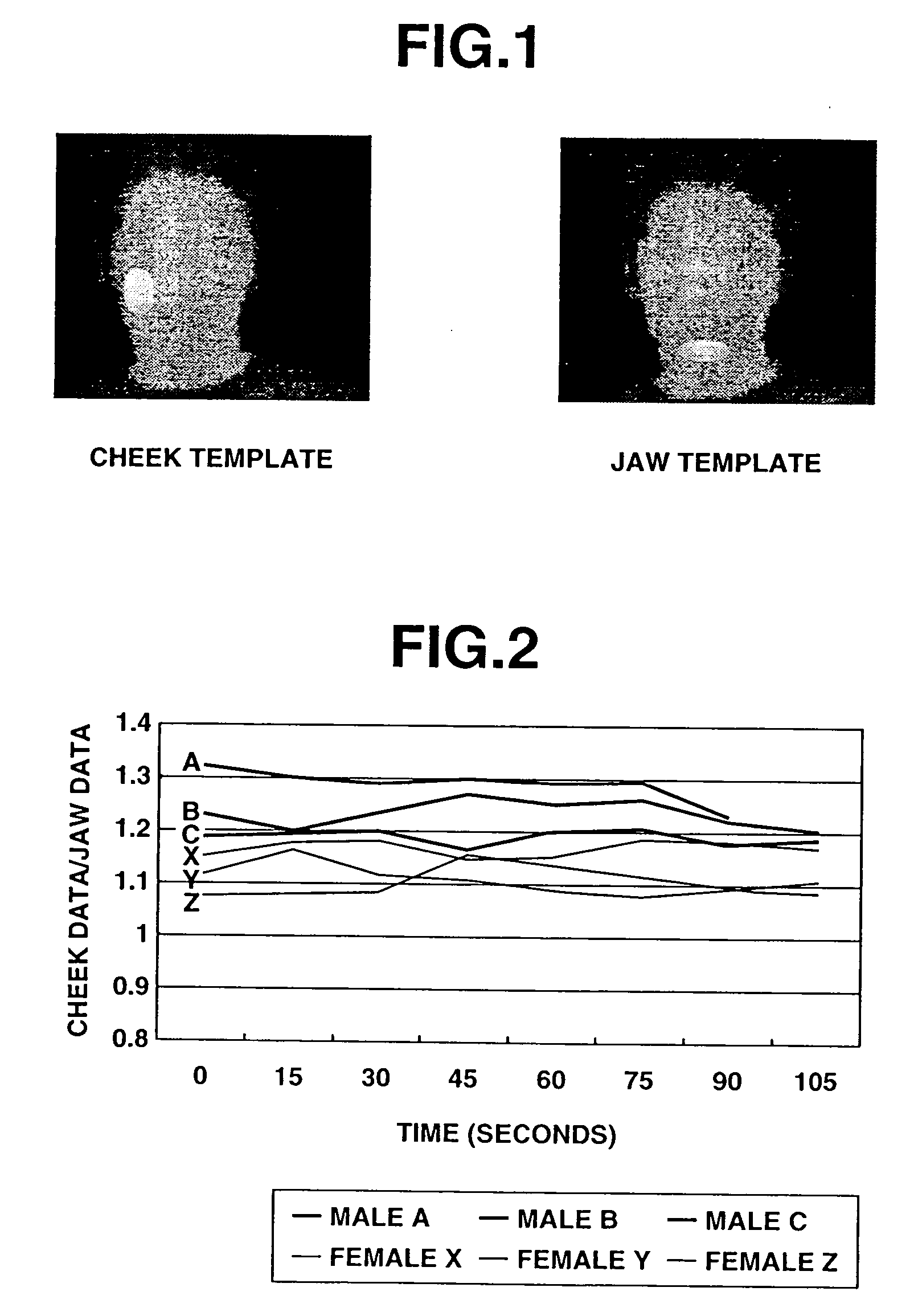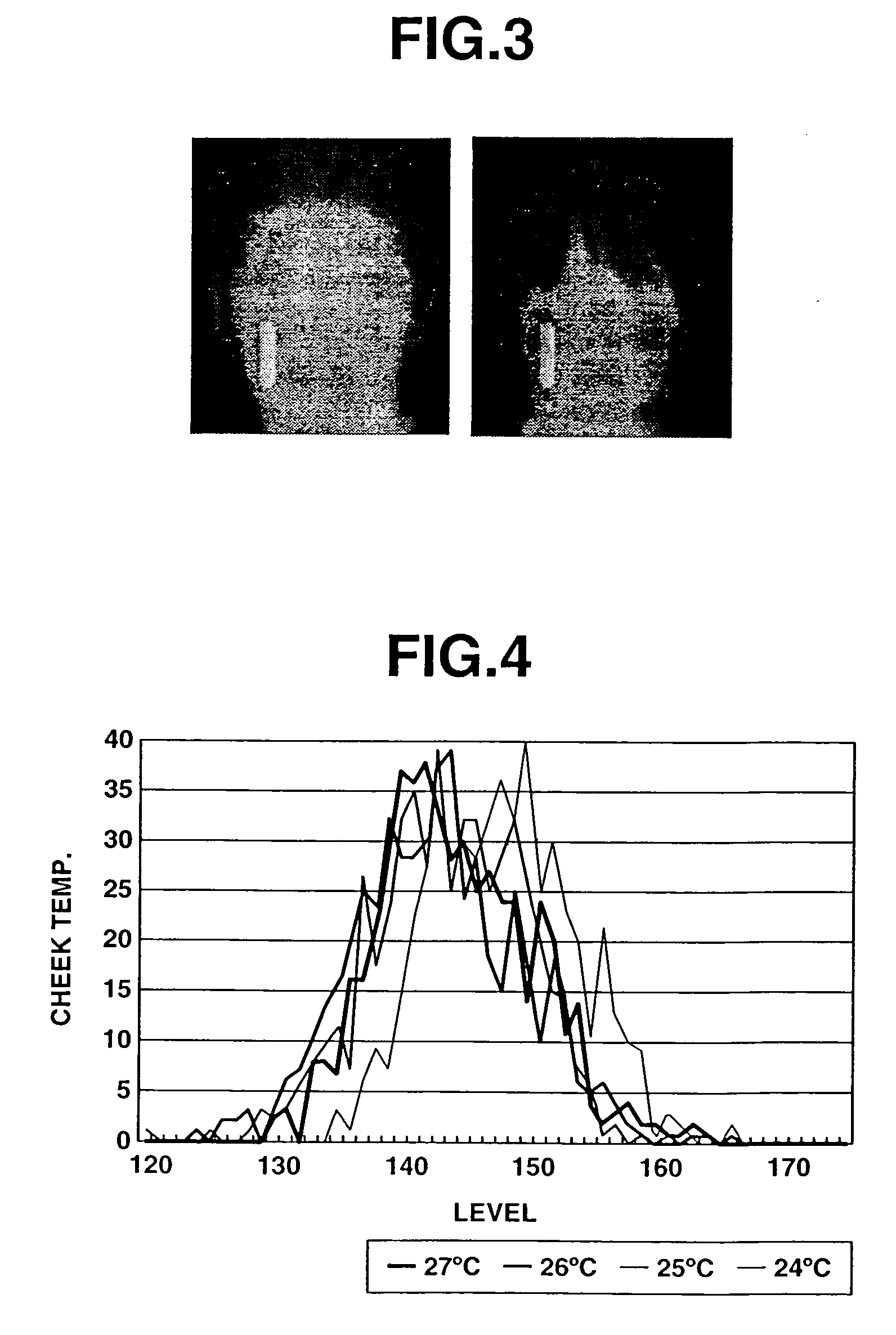Gender Identification Method
a technology of gender identification and identification method, applied in the field of gender identification method, can solve the problems of unreliability and severe limitations in the scope of use, and achieve the effect of expanding the separation between males and females and facilitating discrimination
- Summary
- Abstract
- Description
- Claims
- Application Information
AI Technical Summary
Benefits of technology
Problems solved by technology
Method used
Image
Examples
Embodiment Construction
[0045] In order to set out the present invention in more detail, an explanation will be made with reference to the attached drawings.
[0046]FIG. 8 shows an embodiment of the gender identification method according to the present invention. The gender identification system 1 shown in FIG. 8 is installed at the entrance of a building not shown in the drawing and is configured to discriminate whether each person P about to enter the building is a male or a female and show the entering person P a display in accordance with the discrimination result. The gender identification system 1 is equipped with a television camera 2A for taking infrared images that is installed at the entrance to enable photographing of at least the faces of persons P about to enter the building. An image signal VDA from the television camera 2A is sent to an image data processor 3, where it is subjected to processing for discriminating between males and females as explained later, and is sent to a monitor unit 4 s...
PUM
 Login to View More
Login to View More Abstract
Description
Claims
Application Information
 Login to View More
Login to View More - R&D
- Intellectual Property
- Life Sciences
- Materials
- Tech Scout
- Unparalleled Data Quality
- Higher Quality Content
- 60% Fewer Hallucinations
Browse by: Latest US Patents, China's latest patents, Technical Efficacy Thesaurus, Application Domain, Technology Topic, Popular Technical Reports.
© 2025 PatSnap. All rights reserved.Legal|Privacy policy|Modern Slavery Act Transparency Statement|Sitemap|About US| Contact US: help@patsnap.com



